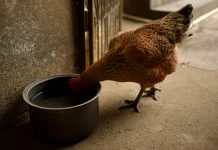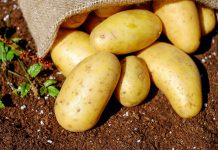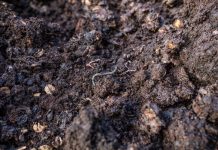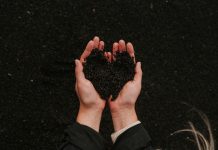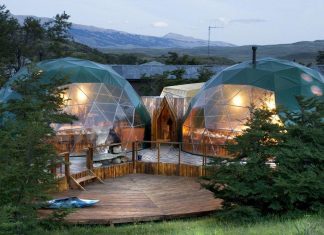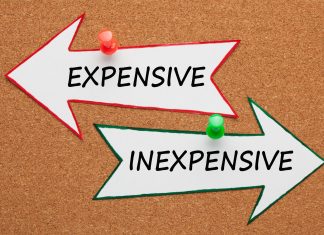Growing organic food means producing it naturally without the use of any synthetic chemicals (pesticides, fertilizers, antibiotics, or growth regulators). As the concern about food security is increasing, people are becoming more inclined towards growing their own food. The best thing about organic food is that it’s absolutely fresh, straight from your garden to the kitchen without any preservatives. There are multiple health benefits of homegrown fruits and vegetables, from being more nutritious to having a higher level of antioxidants. Because you pick them at a perfectly ripened stage, so they are more tasteful and healthier. Consuming fruits and vegetables from your own organic garden dramatically reduces the risk of diseases that are caused by consuming contaminated food; this happens because you have total control over your produce. The pest control services from Insight are the ones to hire to get rid of pests.
What’s in This Article?
In the previous article about Reasons to grow your own food, we have discussed the true reasons for shifting towards growing organic food. Now, in this article, we will provide you comprehensive information about how to actually do that. The below-mentioned points are the main principles that you’ll need to learn to become successful at growing your own organic food.
Gardening Tools
Some basic tools that you’ll need to establish your organic garden are listed below
-
Soil Test Kit
-
Breathable Garden Gloves
-
Lightweight Watering Can
-
Clippers / Pruner
-
Ergonomic Trowel Set
-
Compost Bin

Easy Growing Food for Your Organic Garden
The following are some easiest growing crops for beginners according to season.
Cool Weather crops
-
Lettuce
-
Carrots
-
Peas
-
Spinach
-
Radishes
-
Strawberry
-
Blueberry
Warm Weather Crops
-
Green Beans
-
Zucchini
-
Indeterminate tomatoes
-
Summer squashes
-
Basil
-
Watermelon
-
Herbs
-
Phalsa
Start Small
Many gardeners start gardening in a vast area and then end up getting overrun by pests, weeds, and various gardening tasks. Therefore, if you are an amateur, start small so that you don’t get exhausted. Be realistic about how much area you can manage and the amount of produce you need. 100 square feet area of your house is enough to start organic food production for a single person. If you cannot manage, get help from pest control reno. You can easily grow plenty of food in 100 square feet by increasing planting density. Another tip to get food for a longer duration with little planting space is to choose indeterminate growth type plants; for example, instead of planting 10 tomato plants, plant 2 or 3 indeterminate plants and take care of them well. You can get a load of production from a single happy and healthy plant. The pest control company can help keep your crops healthy and keep the unwanted pests away by implementing effective pest control strategies.

Location
While selecting a location, the most important parameter to consider is the availability of sufficient sunlight for your organic garden. Choose a spot that receives sunlight for at least 7-8 hours. Most of the garden fruits and vegetables need plenty of sunlight and heat for photosynthesis. If your selected area has only part sun, then the good choice of the plant will be lettuce and herbs. Protect your garden from wind by hedging or windbreaks. Other considerations include easy access to water, tools, maintenance, and harvesting.
Soil Testing
Before planting, make sure your soil is properly conditioned to get the best results. A healthy soil helps build up a strong root system, which will eventually grow robust, productive plants. Chemicals used for soil treatment can not only seep into your food, but they also harm the beneficial bacteria, worms, and other microbes in the soil. The best way to check the quality of your soil is to get it tested. You can test it at home by using a soil testing kit or send your soil sample to a nearby agricultural extension office. You’ll get complete information about the pH and nutrient levels of your soil along with treatment recommendations. As you’re going organic, so it’s best to test it in autumn and apply any organic nutrients before winter arrives.
Choose the Right Plants
It’s important to select plants that can thrive best in your specific micro-conditions. Choose plants that can grow well in the available moisture, light, drainage, and soil quality. The happier your plants are, the more resistant they’ll be against insect, pest, and weeds attacks. You can check the USDA’s Hardiness Zones for a general guide. It provides the best information about the right time to sow seeds indoors and then when to transplant seedlings outdoors for further growth. Once you are done with the selection, get the seeds or seedlings from certified organic nurseries; this is because the conventionally grown plants are usually genetically modified, and you need to avoid them for organic purposes.
Watering
The best time to water your organic garden is in the morning. At this time, the weather is cool, so the water loss through evaporation is less. Watering plants in the evening makes them damp overnight, which can help fungi and bacteria to grow. It would be best if you water the roots, not the greenery, so carefully water the base of the plants. Make sure to daily water newly planted seeds; water new plantlets every 2-3 days. Later on, you can reduce the watering frequency to once a week (1 inch of water per week). The deep-water application encourages the roots-development that makes plants strong and healthy. Moreover, the collected rainwater is also the best option for watering your organic food garden. Either way, you may likely need to invest in a good quality garden hose. You may need slight variations in the method mentioned above because of your climate, plant types, and soil conditions.
Controlling Pests without Chemicals
Since you are trying to produce your food in cooperation with nature, so you may have to accept a few occasional pests in your organic garden. But it doesn’t mean you have to share your produce with the pests. For a healthy garden, your first line of defense should be active vigilance. Make daily visits of your organic garden to inspect growing plants for signs of a problem and take quick action. Although there are many organic pesticides available in the market, however, it’s better if you use homemade pesticides to control the infestation. You can also use yellow sticky traps to catch dozens of flying pests. Planting diversity and an increase in the natural predator population (Ladybugs and parasitic wasps) in the garden is also an effective controlling measure.

Concluding Points
[1] Pay close attention to what your growing plants need, including water and fertilizer requirements.
[2] Regularly inspect your garden and stay vigilant to check pest or disease attack and apply control measures immediately.
[3] You can suppress weed growth naturally by using organic mulches (composted straw or leaf mold).
[4] It is important to keep your growing area in good health rather than just pest and disease-free. The diversity in planting, practicing good hygiene, and close observation all aid in preventing problems.
[5] It’s better to put some physical barriers, like netting or cages, to protect your ripening produce.
By growing your food, you can easily become successful in living off-grid, without depending too much on this consumer society. Being self-sufficient in today’s world is not just a choice, but it’s becoming a need of the hour. We should engage ourselves in learning new techniques and ideas to live a more satisfied, healthy, and fulfilled life.





